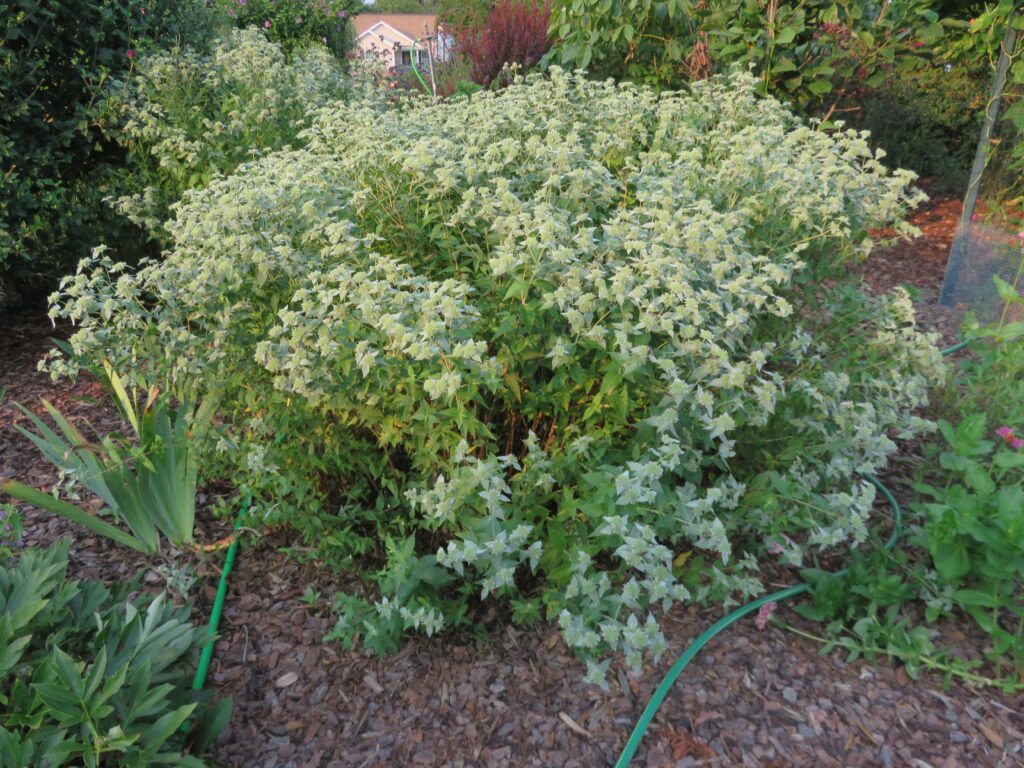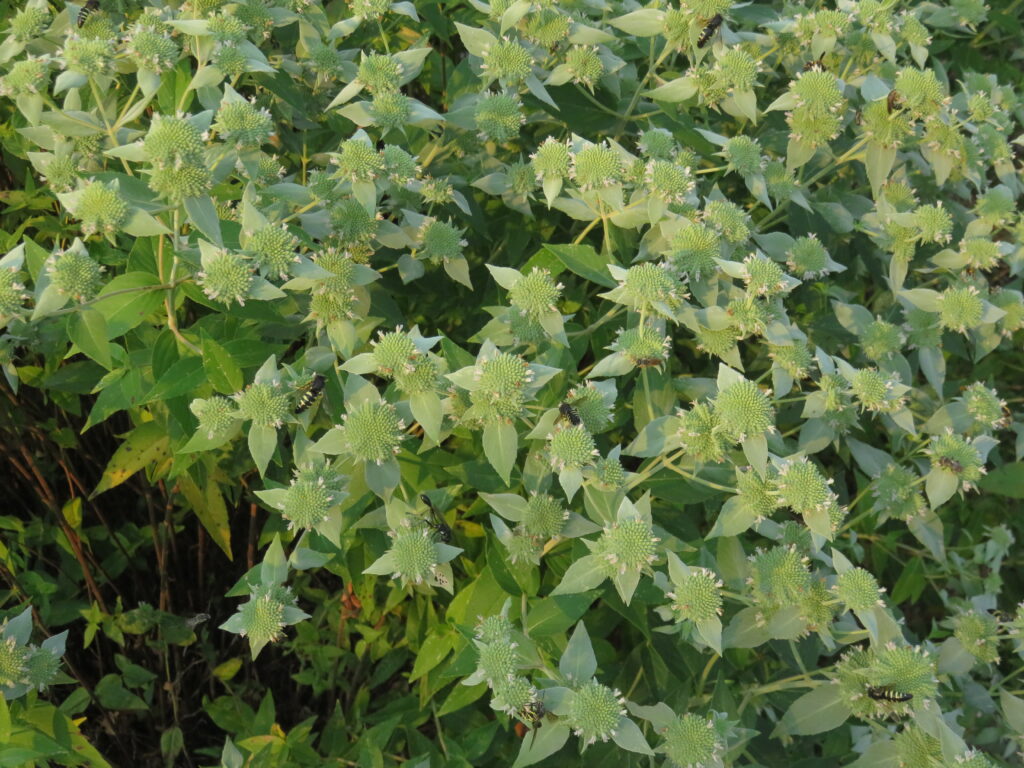
Clustered mountain mint (Pycnanthemum muticum), aka “blunt mountain mint” or “short-toothed mountain mint”, is a tough and adaptable perennial native to meadows and open woodlands across much of the eastern U.S. west to Texas. (USDA Hardiness Zones 4 – 8) (AHS Heat Zones 4 -10).
It is not a true mint (Mentha spp.) but belongs to the same family (Lamiaceae) and has similarly scented leaves. A must-have for pollinator gardens, heads of tiny white to light pink blooms attract butterflies, wasps, and bees from July to September. The inconspicuous flowers are upstaged by surrounding silver bracts, which give the illusion of frost in summer and persist for months. Clustered mountain mint has no serious disease issues, and its aromatic foliage is unpalatable to deer and rabbits.
Branched, vertical stems grow 2-3 feet tall (60-100 cm) and form a dense, weed-suppressing clump. Clustered mountain mint spreads by underground rhizomes and can be aggressive in moist conditions, though it is not invasive to the degree of true mints.
Site clustered mountainmint in an area where it can freely naturalize and mingle among other plants. Its silver sheen plays well with other flower colors and contrasts wonderfully with dark foliage.
Ideally, grow clustered mountain mint in full sun to part shade. It prefers medium to high moisture, fertile, well-drained soils, including clay soils. However, it is less tolerant of drought than most other mountain mints.
Clustered mountain mint can spread aggressively, especially in wet soils. Rhizomes are easy to control by cutting them to the desired size with a spade and pulling the shoots by hand in spring. Seed heads may be left until early spring for winter interest. Tolerates heat and drought once established. No serious pest or disease issues.

Garden Companions: black-eyed Susans (Rudbeckia spp.), bee balms (Monarda spp.), blazing stars (Liatris spp.), Joe Pye weeds (Eutrochium spp.), and native grasses such as little bluestem (Schizachyrium scoparium) and switchgrass (Panicum virgatum).
In my opinion, P. muticum grows too tall to utilize as a groundcover. Tried heading it back by ½ in mid-June; plants recovered very slowly, and flowering was mostly ineffective, and pollinators went elsewhere.

 Posted in
Posted in 
